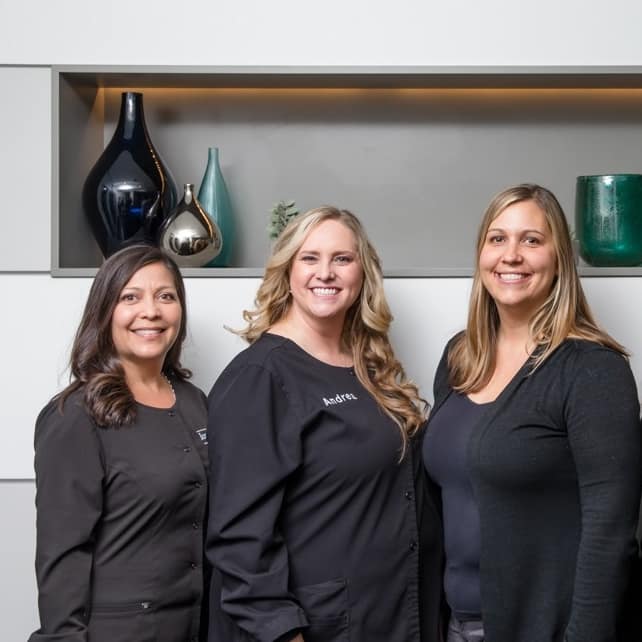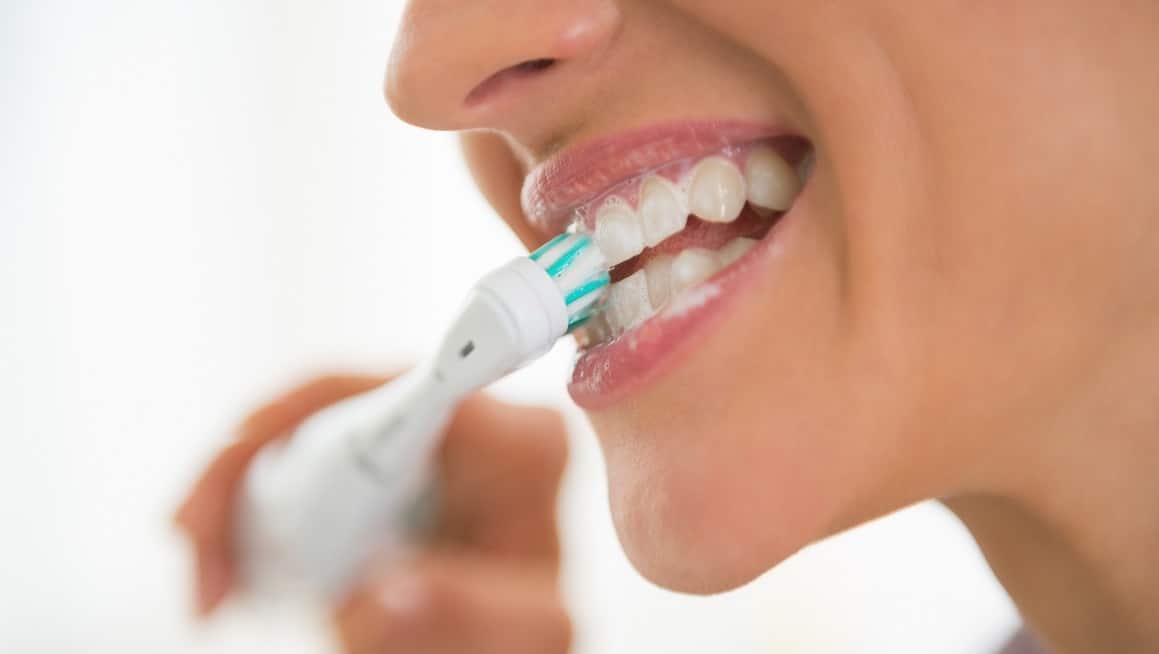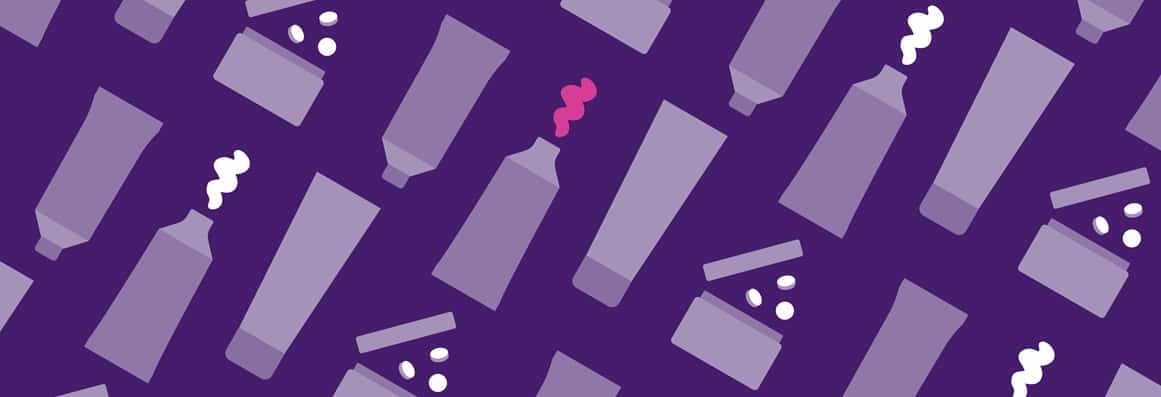11 Amazing Teeth Whitening Tips

If you’re hoping to whiten your teeth, you’re not alone. A study by the American Association of Orthodontists found that almost 90% of dental patients requested tooth whitening.¹ If you want to know how to get whiter teeth, you have many options — some are simple and inexpensive (or free); some require more time and money. But whether you’re looking to do all you can or just want to prevent further staining or discoloration, check out our 11 most helpful teeth whitening tips for a brighter smile.
1. Quit Smoking
Smoking is just as bad for your teeth as it is for the rest of your body. The nicotine and tar in cigarettes stain your teeth over time, and the longer you smoke, the darker and deeper those stains become. Although smokers can benefit from teeth whitening options, smoking will always put your teeth at a great disadvantage if you’re trying to achieve a dazzling smile.
2. Limit Certain Beverages
Coffee, tea, fruit juice, soda, and wine are beverages that contain varying ingredients, like tannin, dyes, and phosphoric acid, which can yellow your teeth over time. If you’re not willing to give up your favorite beverages (here’s to all you coffee drinkers out there), consider these tips to limit their negative effects:
- Drink your beverage in one sitting instead of over a prolonged period to reduce its contact with your teeth.
- Drink water or brush your teeth after drinking to flush away/remove any harmful ingredients.
- Drink through a straw. Although not ideal for drinking beverages like coffee or wine, using a straw helps limit these beverages’ contact with your teeth.
3. Avoid Sugary Snacks
Your mom had good reasons for wanting to keep you away from too much sugar when you were a kid. Sugary snacks, like candy and chocolate, increase the bacteria in your mouth that destroys your enamel over time. Some goodies, like caramels, toffee, and peanut brittle, are even worse culprits because they love to stick to your teeth. If you can’t resist sugary snacks, try keeping them at a minimum and brush your teeth immediately after eating them.
4. Include Certain Foods and Beverages Into Your Diet
Although no extensive studies exist to show how effective certain foods and beverages are in whitening teeth, there’s an indication they can help to a degree. Some foods, such as strawberries and watermelon, contain malic acid, which may help whiten teeth. Others, like pineapple, can dissolve pellicle, which is a layer of salivary protein that bacteria can adhere to and discolor your teeth. Another benefit of some “teeth whitening” foods, like apples and cauliflower, is that they encourage saliva production when eaten. Saliva helps wash away food debris and damaging acids. As for beverages, milk may lighten your enamel because it contains lactic acid, and, unlike most teas, clear or green tea also increases saliva production.
5. Brush and Floss Daily
Many people brush every day, but fail to floss daily. However, the truth is that brushing and flossing every day goes a long way in helping to keep your teeth white by eliminating residue from the foods and drinks you consume. Even flossing helps maintain a brighter smile by removing food particles that could lead to plaque and tartar. To get the most out of brushing you’ll want to read our blog posts on how to brush teeth correctly as well as our top 13 tips on brushing your teeth. Regarding flossing we have articles on how to floss properly as well as how to determine the proper floss types to use.
6. Brush with Teeth Whitening Toothpaste
Most toothpaste brands carry their own teeth whitening options. Some of the most common ingredients found in these toothpastes are peroxide, baking soda, activated charcoal, and mild abrasives that whiten and polish your teeth. Although they help reduce staining from culprits like coffee, tea, wine, and smoking, they lack the power to lighten or remove discolorations deeper than the surface enamel.
7. Don’t spend money on Over-the-Counter Whitening Trays
We don’t recommend the over-the-counter whitening kits available in convenience stores and online. Unlike custom-made whitening trays from your dentist, these have low concentrations of hydrogen peroxide because their non-custom-fitted structure means the gel will encounter your gums.
8. Use Custom-Fitted Teeth Whitening Trays
Available at your dentist, custom-fitted teeth whitening trays have higher concentrations of hydrogen peroxide than what is found in whitening toothpastes and non-custom (over-the-counter) trays. They also fit better than non-custom trays, making them more effective in whitening your teeth while reducing the amount of peroxide that touches your gums. Custom-fitted trays require two trips to your dentist. The first is so your dentist can perform a 3D scan of your teeth to create your trays; the second is to ensure your trays fit correctly.
9. Opt for In-Office Teeth Whitening
We believe that in-office whitening is the best teeth whitening method. Available at your dentist’s office, in-office whitening is comparable to custom trays — including in cost — but offers a faster way to brighten your teeth. And, unlike custom trays which require two dental appointments, in-office whitening requires only one. In little more than 90 minutes, your dentist will apply a hydrogen peroxide gel to your teeth, followed by a special lamp that aids in the whitening process. Another benefit of in-office whitening is that the limited gel application means you’re less likely to experience tooth or gum sensitivity.
10. Visit Your Dentist for a Cleaning
Although daily brushing and flossing will help whiten your teeth, don’t forget to visit your dentist for your regular cleanings. A professional dental cleaning is more thorough than at-home brushing and it removes plaque, which ordinary brushing can’t do. Most people should see a dentist every 6 months, but some people should go more often. If you’re not sure how often you should get your teeth cleaned, we have a blog post on how often to see the dentist that answers a lot of common questions.
11. Don’t Use Hydrogen Peroxide at Home
Using hydrogen peroxide at home is a recent trend that started on Tik Tok. Due to safety concerns, some hydrogen peroxide lacks a high enough concentration to whiten your teeth effectively. If you do manage to find hydrogen peroxide with a higher concentration, be aware it can cause serious tooth damage. Therefore, we do not recommend using hydrogen peroxide at home to whiten teeth.
Summary
There are many viable options to help whiten your teeth. Remember that most take time, consistency, and patience, especially if you want to achieve a vibrant smile long-term. If you’re overdue for a professional cleaning, contact your dentist for an appointment, and talk to them about what the best whitening options might be for you. Also, if you’d like to learn more about professional teeth whitening, check out the details on our teeth whitening page.
Related Articles
References
- Slack, M., Swift, E., Rossouw, P, Phillips, C. Tooth whitening in the orthodontic practice: a survey of orthodontists. nih.gov. Retrieved November 8, 2023, from https://pubmed.ncbi.nlm.nih.gov/23540638/.




